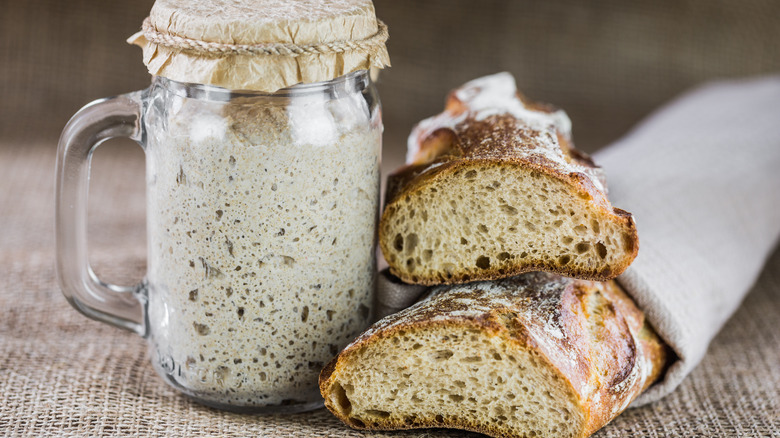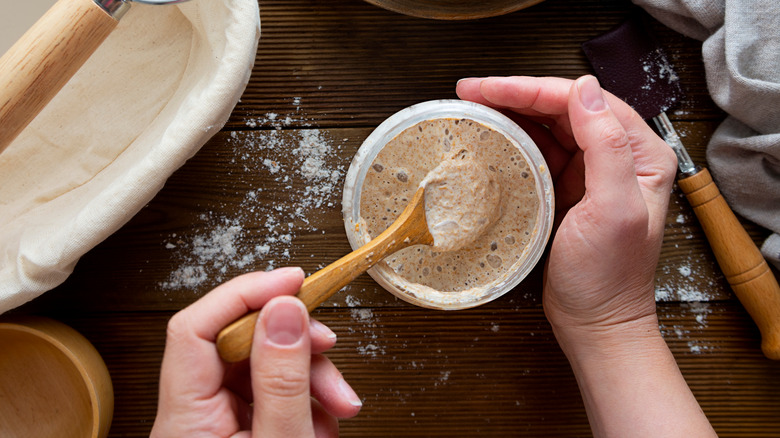Is There A Difference Between Levain And Sourdough Bread Starters?
Levain isn't just the name of a popular bakery in New York City, it is actually an old French word that means leaven or sourdough. Another definition of levain, however, maintains that it is simply the part taken from a starter that's been recently fed and is ready to use. The reason why levain, in addition to the English word leaven, is commonly used to refer to starters is that the French imported sourdough bread to California and thus the word was adopted.
Sometimes sourdough starters and levain are used interchangeably because they are both active colonies of wild yeast and lactic acid bacteria made out of a fermented mixture of water and flour. As the yeast and bacteria feed on the flour carbohydrates, they release a gas that provides the lift and air in the dough.
Unlike commercial yeast packets you can buy in a store, starters make bread that has a distinctive texture and unique flavor. You can also make starters yourself from scratch with simple ingredients, though it's a time-intensive process that takes seven days.
Even sourdough starters and levain cannot necessarily be used interchangeably for each and every recipe. There is one key difference between levain and sourdough bread starters that you need to be aware of before pursuing your next baking adventure.
Levain is more versatile
Levain is an all-purpose starter for making all kinds of baked goods — not just sourdough bread. Levain starter is a leavening agent made up of flour, water, and wild yeast from the air and environment that ferments and can be kept alive continuously. From this stock, bits can be used to start making bread, croissants, waffles, and cookies. However, levain doesn't have that uber-distinctive tang that you would get from a sourdough starter.
What makes sourdough starters uniquely tangy is how their acids interact with a warm environment, but there are a lot of factors at play, like consistency, temperature, feeding frequency, and flour. To turn up the sour factor, less flour can be used and the dough should rise in a warmer environment, causing the development of more acids. Lactic acid and acetic acid are responsible for the sour flavor, and it's the latter that has a sharper tang.
No matter what name you call a starter, and if the result is sourdough or not, it'll likely result in a delicious, fluffy bread that's risen to the occasion.

